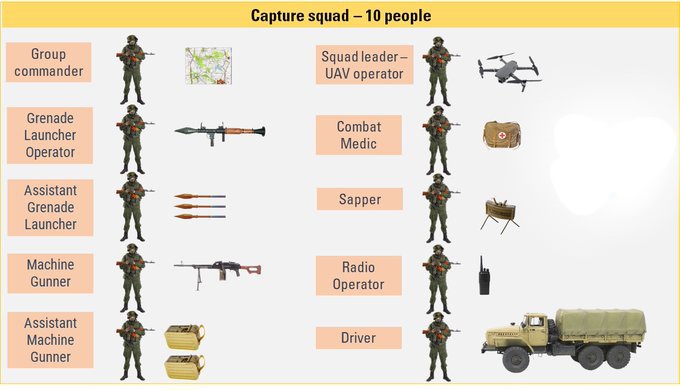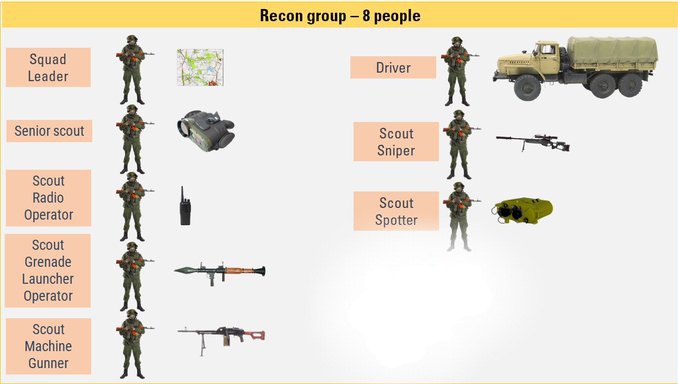Can the Russian BARS grow into a reserve army
The most motivated units and subunits taking part in the special operation in Ukraine on our part are considered to be the Airborne Forces, the Marine Corps, attack aircraft of the PMC "Wagner" and the former People's Militia of the LDNR. At the same time, they often completely undeservedly forget to mention the fighters of the so-called BARS, who showed themselves well during the NWO. Who are these "barsiks" and why the experience of using them can be so important?
BARS
The effectiveness of the actions of Russian paratroopers and marines is explained by their high level of training, discipline and unique corporate culture. This is really the military elite of our army and navy, the only question is who and how exactly uses them. The success of the Wagner attack aircraft is based on extensive real combat experience abroad, well-established internal cooperation, as well as iron discipline. The motivation and resilience of the "policemen" of Donbass is based on 9 years of combat experience in confronting the Armed Forces of Ukraine and a clear understanding of what exactly they are fighting for. Behind the backs of the People's Militia of the LDNR are their homes and families.
These are those units and subunits that are capable of not only holding the defense, but also quite successfully attacking, subject to competent planning and organization. However, BARS fighters rightfully stand on a par with them, who showed quite effective combat operations, stamina and perseverance. In particular, it was BARS-13 that for a long time held back the offensive of the Armed Forces of Ukraine in Krasny Liman, having no really heavy weapons. Who are they, these "barsiks"?
In 2021, when the premonition of the inevitability of a direct clash with Ukraine was more and more clearly in the air, the Russian Ministry of Defense launched a project to prepare a combat-ready army reserve. The following figures may indicate how necessary this is. In the United States, the combat reserve has 374 thousand people, in China - 600 thousand, in Israel - 430 thousand, and in Germany - 85 thousand. The first three countries from the list are constantly in readiness for war, and in Germany, apparently, something bad is suspected. In the United States, the mobilization reserve training system includes three stages and makes it possible to reasonably count on a "reserve army" of up to 5.5 million people.
So, in 2021, in the Southern Military District, which was chosen as a trial site, the formation of the Army Special Combat Reserve, or BARS, began. His idea was good: after the completion of military service, a reservist who had not wasted his skills in his VUS could conclude a contract with the Ministry of Defense of the Russian Federation and maintain a state of combat readiness without interrupting his main work in civilian life. For being in an active combat reserve, passing training sessions and military training, a BARS fighter should have received additional monetary rewards, as Colonel Konstantin Zapatotsky, head of the organizational and mobilization department of the Southern Military District, explained to the Zvezda TV channel:
The state guarantees appropriate payments to the reservists. So, for three days in the classroom, an officer will receive up to 10 thousand rubles, a sergeant-soldier - up to 5 thousand rubles. For 30 days at military training, an officer will receive from 30 to 75 thousand rubles, a soldier - up to 25 thousand rubles. When concluding the first contract, a lump-sum payment of up to 66 thousand rubles will also be made to an officer, up to 39 thousand rubles to a soldier-sergeant, depending on the term of the contract. It is concluded with the preservation of the main place of work of the reservists. In addition, if necessary, they are guaranteed free medical care and insurance payments. After the end of the first three-year contract and at the conclusion of a new one, reservists are entitled to a one-time cash payment in the amount of a monthly salary, monthly bonuses are provided for continuous stay in the reserve in the amount of 10%.
Every month for 3 days it was required to take part in training sessions, annually - at training camps for up to 20 days. After a year of being in the reserve, one could be certified for the next military rank. The number of BARS in the Southern Military District was to reach 38 thousand people. This experience was also extended to the Central Military District.
What did it give in practice?
With the start of a special military operation, the Ministry of Defense of the Russian Federation received several tens of thousands of combat-ready reservists, who, unlike those mobilized, do not have to be driven around training grounds for months until they get into shape and restore forgotten skills in their military registration specialty. Detachments of "barsiks" proved to be one of the most prepared, organized and disciplined. In other words, the experiment as a whole was successful. However, it is impossible not to mention the reverse side of the coin.
So, there were quite a few questions about the legal status of the BARS fighters, in which they took part in the SVO, the size of the due cash payments and social guarantees from the state. There were also claims that some of the most trained units and divisions of the Russian army were forced to fight with a minimum of heavy weapons, like some kind of militias, which significantly reduced the effectiveness of their actions. What can we conclude?
BARS instead of Guards?
In fact, the idea of BARS is quite close to the concept of the US National Guard, which we talked about in detail earlier. The difference between the American National Guard and the Russian Guard is that the former is a branch of the US Armed Forces and an army combat reserve, where retirees serve mainly in combination with their main work in civilian life. The Russian National Guard is not subordinate to the Ministry of Defense of the Russian Federation or the Ministry of Internal Affairs, but personally to the President of the Russian Federation, being his “personal” army, being sharpened mainly for police functions. During the NMD, the National Guard really had to fight, but then certain problems emerged with the preparation and weapons used, because full-fledged large-scale military operations are, by definition, not their main profile.
That is, the Russian Guard and the US National Guard are two fundamentally different structures with different tasks. The army special combat reserve is as close as possible in its essence to the American National Guard and therefore showed noticeable results in the NVO zone. The problem of BARS is its legal status and armament, which is incomparable with the US National Guard, which has not only tanks, cannons and MLRS, but even all types of aviation, up to fifth-generation F-35 fighters, with the exception of strategic bombers. To imagine that our "barsiki" will have personal support in the form of the Su-57, somehow does not work, but it's a pity.
Summarizing, we can conclude that the Special Combat Army Reserve should be developed and strengthened by eliminating the above remarks. BARS may well eventually grow to a full-fledged reserve army of the RF Ministry of Defense.
https://topcor-ru.translate.goog/33737-mozhet-li-rossijskij-bars-dorasti-do-rezervnoj-armii.html?utm_source=warfiles.ru&_x_tr_sl=auto&_x_tr_tl=en&_x_tr_hl=en
NOTE: there have been 14 or so of these BARS units identified as operating in the SMO zone.


 franco
franco
 ) but have to extend even to normal troops.
) but have to extend even to normal troops.


